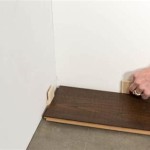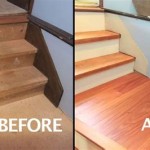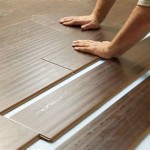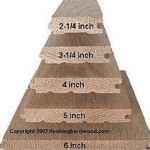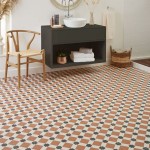Understanding Greenguard Certified Flooring
Greenguard Certification has become a significant benchmark in the flooring industry, signifying products that meet stringent chemical emission standards. This certification is particularly important for indoor environments, where occupants spend the majority of their time and are therefore more susceptible to the effects of volatile organic compounds (VOCs) released from building materials and furnishings. Selecting Greenguard certified flooring is a proactive step toward creating healthier and more sustainable indoor spaces.
The demand for Greenguard certified flooring has grown in tandem with increasing awareness of indoor air quality (IAQ) and its impact on human health. Understanding what this certification entails, how it benefits consumers and building occupants, and the range of flooring options available with this designation is crucial for making informed decisions in both residential and commercial projects.
Greenguard Certification is not merely a label; it represents a commitment from manufacturers to reduce chemical emissions from their products. This commitment extends beyond mitigating direct health effects to encompass broader environmental concerns, contributing to a more sustainable built environment.
What is Greenguard Certification?
Greenguard Certification is an independent, third-party certification program that tests products for chemical emissions. Developed by UL Environment, a division of Underwriters Laboratories (UL), it aims to minimize exposure to VOCs and other harmful chemicals in indoor environments. The certification process involves rigorous testing to ensure that products meet specific emission limits, contributing to healthier indoor air quality.
The Greenguard Certification program has two main levels: Greenguard Certified and Greenguard Gold Certified. The original Greenguard Certification focuses on ensuring products meet acceptable standards for use in environments such as offices and commercial buildings. Greenguard Gold Certification, also known as Greenguard Children & Schools Certification, has stricter emission limits and considers the unique sensitivity of children and school environments. Products certified to Greenguard Gold are deemed suitable for use in schools, healthcare facilities, daycares, and other sensitive settings.
The testing process for Greenguard certification involves placing product samples in environmental chambers and measuring the levels of VOCs released over a period of time. These measurements are then compared to established emission limits. Products that meet these limits are awarded certification and are listed in the Greenguard product guide, which is a publicly accessible resource.
The scope of chemicals tested for includes a wide range of VOCs known to have adverse health effects. These VOCs can originate from adhesives, coatings, backings, and other components used in the manufacturing of flooring products. By setting stringent emission limits, Greenguard Certification encourages manufacturers to use low-emitting materials and processes.
One of the key aspects of Greenguard Certification is its ongoing monitoring and surveillance program. Certified products are subject to periodic retesting to ensure continued compliance with emission standards. This ensures that the certification remains valid and that manufacturers maintain their commitment to reducing chemical emissions.
Greenguard Certification is recognized by various green building programs and standards, including LEED (Leadership in Energy and Environmental Design). Using Greenguard certified flooring can contribute to earning points toward LEED certification for building projects, further reinforcing the value of this certification in the sustainable building sector.
The UL Environment, as the administrator of the Greenguard Certification program, has a reputation for scientific rigor and impartiality. This reputation enhances the credibility of the certification and helps consumers and building professionals trust the Greenguard label as a reliable indicator of low-emitting products.
Benefits of Using Greenguard Certified Flooring
Using Greenguard certified flooring offers a range of benefits, both for the health of building occupants and for the environment. These benefits stem from the reduced levels of chemical emissions associated with certified products.
Improved Indoor Air Quality is perhaps the most significant benefit. VOCs released from flooring materials can contribute to poor IAQ, leading to a variety of health problems. Greenguard certified flooring minimizes VOC emissions, creating a healthier indoor environment. This is particularly important for individuals with allergies, asthma, or other respiratory sensitivities.
Reduced Health Risks are another key advantage. Prolonged exposure to VOCs can cause a range of adverse health effects, including headaches, dizziness, eye and throat irritation, and in some cases, more serious conditions. By reducing VOC emissions, Greenguard certified flooring helps to mitigate these health risks.
Enhanced Comfort and Productivity can also result from using Greenguard certified flooring. A healthier indoor environment can lead to improved concentration, reduced absenteeism, and increased productivity in offices and other workplaces. In residential settings, it can contribute to a more comfortable and enjoyable living space.
Contribution to Green Building Practices is a significant benefit. As mentioned earlier, the use of Greenguard certified flooring can contribute to achieving LEED certification for building projects. This is important for building owners and developers who are committed to sustainable building practices.
Demonstration of Environmental Responsibility is another advantage. Choosing Greenguard certified flooring demonstrates a commitment to environmental stewardship. It signals to customers, employees, and the community that the building owner or occupant values sustainability and is taking steps to reduce their environmental impact.
Compliance with Regulations is becoming increasingly important. As awareness of IAQ grows, regulations regarding VOC emissions from building materials are becoming more common. Using Greenguard certified flooring can help building owners and developers comply with these regulations and avoid potential penalties.
Increased Property Value can be a consequence of using sustainable and healthy building materials. Buildings that incorporate Greenguard certified flooring and other green features may be more attractive to potential buyers or tenants who are looking for environmentally responsible and healthy living or working spaces.
Marketing Advantage is a benefit that businesses can leverage. Highlighting the use of Greenguard certified flooring in marketing materials can attract customers who are environmentally conscious and health-focused. This can provide a competitive edge in the marketplace.
Peace of Mind is a less tangible, but equally important, benefit. Knowing that you have chosen flooring that has been independently tested and certified to meet stringent emission standards can provide peace of mind for building owners and occupants. This can be especially valuable in sensitive environments such as schools and healthcare facilities.
Types of Flooring with Greenguard Certification
A wide variety of flooring types are available with Greenguard Certification, catering to diverse aesthetic preferences and functional requirements. This makes it easier for consumers and building professionals to find flooring options that meet both their design needs and their commitment to IAQ.
Luxury Vinyl Tile (LVT) and Luxury Vinyl Plank (LVP) are popular choices and are widely available with Greenguard Certification. These materials offer durability, water resistance, and a range of aesthetic options, making them suitable for both residential and commercial applications. The certification ensures that the VOC emissions from the vinyl materials and adhesives are minimized.
Laminate Flooring is another common option. Laminate flooring with Greenguard Certification is designed to minimize formaldehyde emissions, which is a key concern with this type of flooring. The certification ensures that the laminate core and surface layers meet stringent emission standards.
Engineered Hardwood Flooring can also be found with Greenguard Certification. This type of flooring consists of a hardwood veneer bonded to a core of plywood or other composite material. The certification ensures that the adhesives and finishes used in the manufacturing process meet low-emission standards.
Tile Flooring, including ceramic and porcelain tile, is inherently low-emitting. However, Greenguard Certification may be relevant for the adhesives and grouts used in the installation of tile flooring. Choosing Greenguard certified adhesives and grouts ensures that the entire flooring system meets low-emission standards.
Carpet and Carpet Tiles are frequently available with Greenguard Certification. Carpet can be a significant source of VOC emissions due to the fibers, backings, and adhesives used in its construction. Greenguard certified carpet products have been tested and verified to emit low levels of VOCs, contributing to healthier indoor air.
Rubber Flooring, often used in gyms and play areas, can also be found with Greenguard Certification. This is particularly important for rubber flooring, as it can emit a strong odor if not properly manufactured. The certification ensures that the rubber materials and adhesives used meet stringent emission standards.
Cork Flooring is a sustainable and naturally low-emitting material. However, Greenguard Certification can provide additional assurance that the adhesives and finishes used in the manufacturing process meet low-emission standards. Cork flooring is a good choice for those seeking both environmental sustainability and healthy indoor air quality.
Linoleum Flooring, made from natural materials such as linseed oil, rosin, and cork, is another environmentally friendly option. Greenguard Certification can verify that the product meets stringent emission standards, further enhancing its appeal as a sustainable and healthy flooring choice.
When selecting Greenguard certified flooring, it is important to consider the specific needs of the application, including durability, moisture resistance, and aesthetic preferences. It is also advisable to review the product's certification details to ensure that it meets the required emission standards for the intended use environment.

The Greenguard Gold Certification Hardwood Floor Company

Greeenguard Gold Certified Lifecore For Peace Of Mind

Greenguard Gold Certified Flooring Brands My Chemical Free House

What Is Greenguard Gold Certification Mp Global S Llc

Greenguard Certified And Floorscore What S The Difference Flooret

Sustaility Eastcoast Wood Floors

The Greenguard Certification Database Johns Manville

What Does It Mean To Be Greenguard Certified

Greenguard Gold Certified Flooring Brands My Chemical Free House

Greenguard
Related Posts

